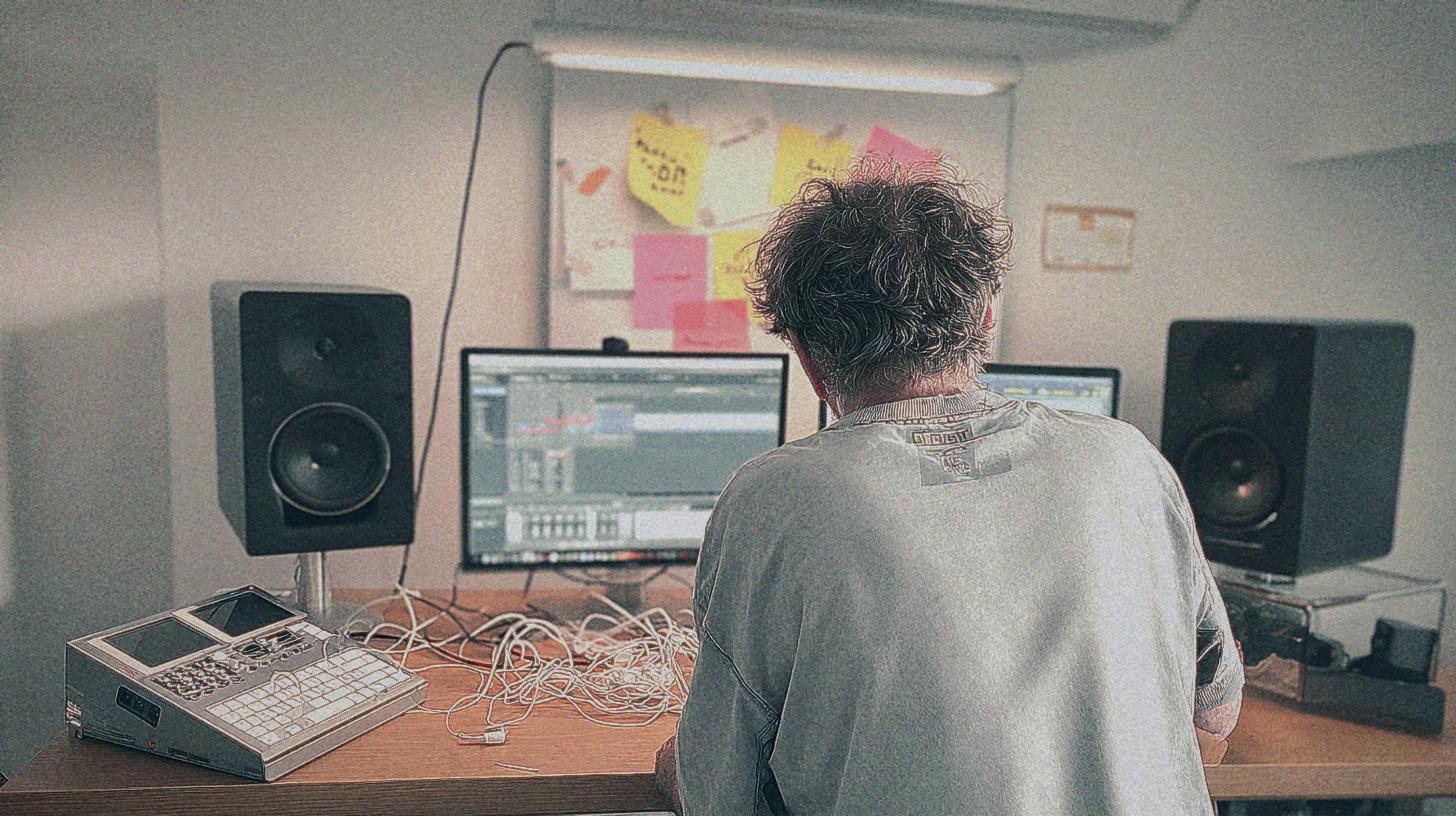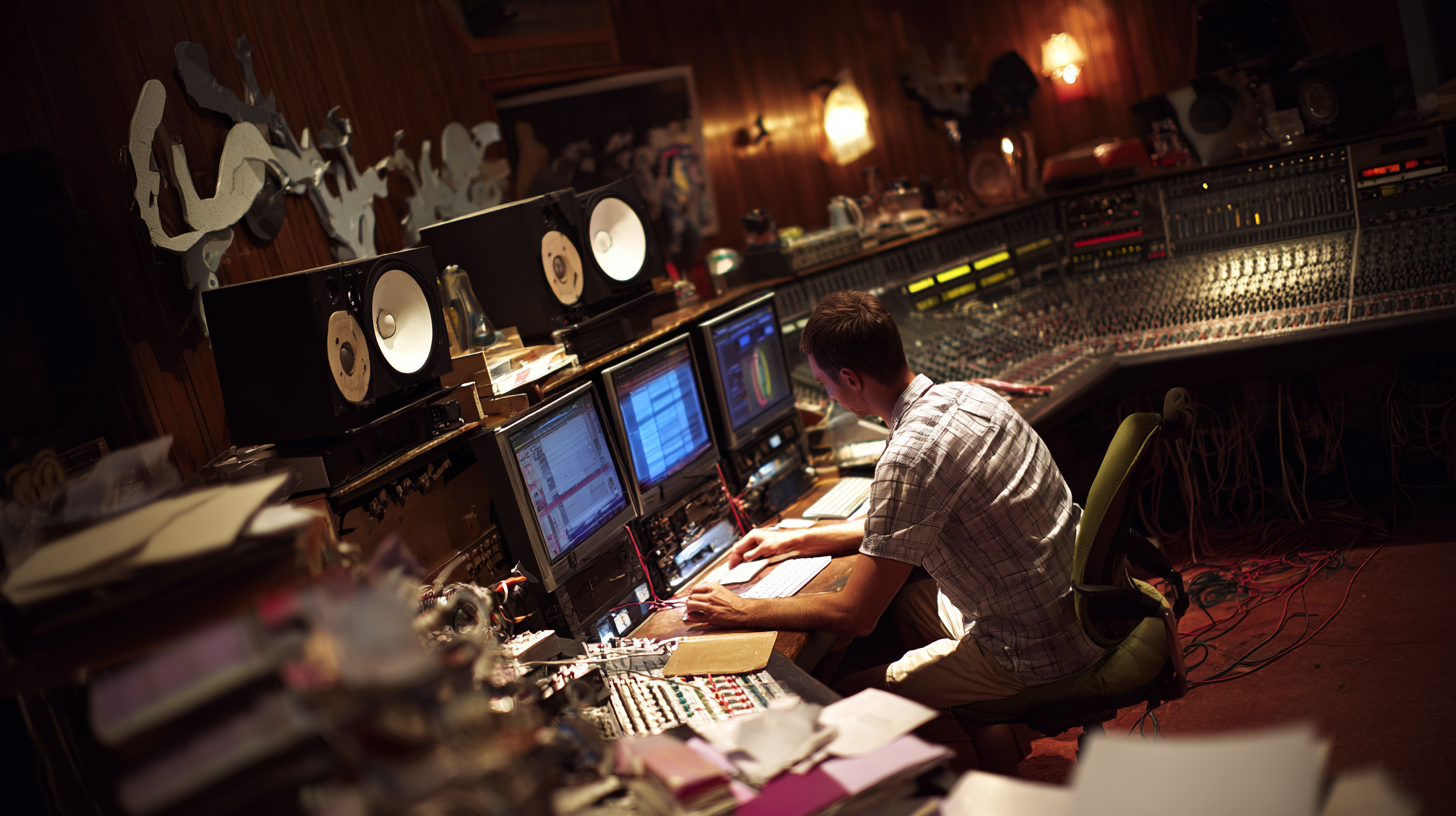
What Is a Dynamic Microphone and Why Is It Essential for Metal?
Nail The Mix Staff
If you’ve ever tried to capture the sound of a roaring 100-watt guitar amp or a vocalist unleashing a gut-wrenching scream, you know that not all mics are created equal. Some will crap out, distort horribly, or just sound thin and brittle. This is where the hero of heavy music steps in: the dynamic microphone.
You’ve seen them everywhere—the iconic Shure SM57 pointed at a Mesa cab, the chunky Shure SM7B in front of a screaming vocalist. But what actually is a dynamic microphone, and why is it the go-to choice for almost every loud sound source in a metal production?
Let's dive into the nitty-gritty of how they work, why they’re your best friend for aggressive music, and exactly how to put them to work on your next track.
The Nitty-Gritty: How a Dynamic Mic Actually Works
Forget the complex circuitry of a condenser mic for a second. At its core, a dynamic microphone is brutally simple, which is a huge part of its magic. Think of it like a tiny speaker working in reverse.
Here’s the basic rundown:
- The Diaphragm: A thin piece of material (the diaphragm) vibrates when sound waves hit it.
- The Voice Coil: Attached to the back of the diaphragm is a small coil of wire (the voice coil).
- The Magnet: This whole assembly sits inside a magnetic field created by a permanent magnet.
When you scream into the mic, the diaphragm and the attached coil move back and forth within the magnetic field. This movement induces a small electrical current in the coil—and boom, that’s your audio signal.
Because of this simple, robust design, dynamic mics don't require external power (like the +48v phantom power needed for condenser mics). You just plug it in and you're ready to go. This straightforward construction leads to some key characteristics that make them perfect for metal.
Why Dynamic Mics Are a Metal Producer's Best Friend
So, why choose a dynamic mic over a more sensitive, detailed condenser for heavy genres? It comes down to a few key advantages that are practically tailor-made for high-gain, high-volume chaos.
They Can Take a Beating (High SPL Handling)
SPL stands for Sound Pressure Level—basically, how loud a sound is. A cranked Orange amp, a snare hit from a heavy-handed drummer, or a death metal growl can produce insanely high SPLs that would overload the sensitive electronics of many condenser mics, causing nasty clipping and distortion.
Dynamic mics, on the other hand, are built like tanks. You can stick a Shure SM57 right on the grille of a speaker cab being pushed to its limit, or an inch away from a snare drum being hit with full force, and it won’t even flinch. It will just capture the raw power without falling apart. Mics like the Sennheiser MD 421 or the AKG D112 are famous for this ruggedness on toms and kick drums.
The "In-Your-Face" Mid-Range Punch
Dynamic mics aren’t known for being perfectly flat or "transparent." In fact, their color is their strength. Many of the most popular dynamic mics have a built-in frequency response that emphasizes the mid-range—exactly where the aggression and clarity of guitars and vocals live.
The Shure SM57 is the classic example. It has a famous presence peak around 4-6kHz, which helps guitars cut through a dense mix without you having to touch the EQ. This "forward" character is what gives dynamic mics their signature punchy and aggressive sound.
Killer Off-Axis Rejection and Less Room Bleed
Most home studios aren't perfectly treated acoustic spaces. When you’re tracking vocals in a bedroom or micing a cab in a garage, a sensitive condenser mic will pick up everything: the sound of your computer fan, the reverb of the room, the dog barking downstairs.
Dynamic mics are generally much less sensitive to sounds that aren't coming from directly in front of them (this is called off-axis rejection). This is a lifesaver for isolating your sound source. When you point an SM7B at a vocalist, you get the vocalist—not the room. This focus is critical for achieving tight, clean, and professional-sounding metal recordings in less-than-ideal environments.
The Proximity Effect: Friend or Foe?
Ever notice how a vocalist’s voice gets deeper and more bass-heavy the closer they get to the mic? That’s the proximity effect, a characteristic inherent to most dynamic mics. As the sound source gets closer to the diaphragm, the low-frequency response is boosted.
You can use this to your advantage:
- Beefy Vocals: Have your vocalist get right up on the grille for a thick, commanding vocal tone.
- Thick Guitars: Moving a mic closer to the speaker cone can add low-end girth to a guitar tone that feels a bit thin.
But be careful—too much proximity effect can create mud and boominess that clutters your mix. This is where smart EQ comes in. Don’t be afraid to use a high-pass filter to tame that excess low-end and keep things tight.
Practical Metal Applications: Putting Dynamics to Work
Screaming Vocals
This is Shure SM7B territory. There’s a reason it’s the standard for everything from brutal death metal vocals to melodic metalcore screams. Its built-in pop filter and windscreen tame harsh plosives, its smooth response handles aggressive mid-range without sounding shrill, and its excellent rejection helps isolate the vocal performance.
- Technique: Get the vocalist to eat the mic—seriously. Have them right up on the grille to maximize the proximity effect and get a huge, intimate sound.
- Signal Chain: Run the SM7B into a preamp with a lot of clean gain (it’s a notoriously gain-hungry mic). Follow it with a compressor to catch the wild peaks. A plugin like the Waves CLA-76 on its fastest attack setting is perfect for clamping down on aggressive transients.
Blistering Guitar Cabs
The Shure SM57 is the undisputed king of the metal guitar cab. It’s affordable, indestructible, and has that perfect mid-range bite. For a different flavor, the Sennheiser MD 421 is another classic choice, often offering a bit more low-mid body.
- Technique: Start by pointing a single SM57 at the edge of the speaker's dust cap. This is a great starting point for a balanced tone.
- Move it toward the center of the cone for more brightness and bite.
- Move it toward the edge of the cone for a darker, warmer sound.
- Advanced Technique (The Fredman): Use two SM57s. Point one directly at the cone, and place the second one right next to it at a 45-degree angle. Blending these two mics together can create a thick, phasey, and incredibly aggressive tone right at the source.
Punchy Drums
Dynamic mics are the backbone of any metal drum recording.
- Kick Drum: Use an AKG D112 or Shure Beta 52A inside the kick drum, pointed towards the beater. This will capture the essential "click" of the attack and the low-end "thump."
- Snare Drum: An SM57 on the top head is the law. It perfectly captures the crack and body of the snare while rejecting a good amount of hi-hat bleed.
- Toms: The Sennheiser MD 421s are the classic choice for rack and floor toms. They capture the powerful attack and deep resonance of the shell without turning into a muddy mess.
The Final Mix: It's More Than Just the Mic
Understanding what a dynamic microphone is and how to place it is a massive step towards professional-sounding metal productions. They are the workhorses that allow you to capture the loudest, most aggressive sounds with punch and clarity. From the SM57 on a guitar cab to the SM7B on vocals, these mics define the sound of modern metal.
But choosing and placing the mic is just the beginning. How do you blend that dual-mic guitar setup? What specific EQ cuts do you make to fit that SM57-captured snare into the mix? How much compression is too much for those screamed vocals?
Watching the pros handle these exact challenges is the fastest way to level up your skills. At Nail The Mix, you get to watch world-class producers mix real songs from bands like Gojira, Lamb of God, and Periphery from scratch. You get their multi-tracks to mix yourself and see exactly how they use these very same dynamic mics to craft album-ready tones.
See how the pros build massive metal mixes and unlock your sound.
Get a new set of multi-tracks every month from a world-class artist, a livestream with the producer who mixed it, 100+ tutorials, our exclusive plugins and more
Get Started for $1




